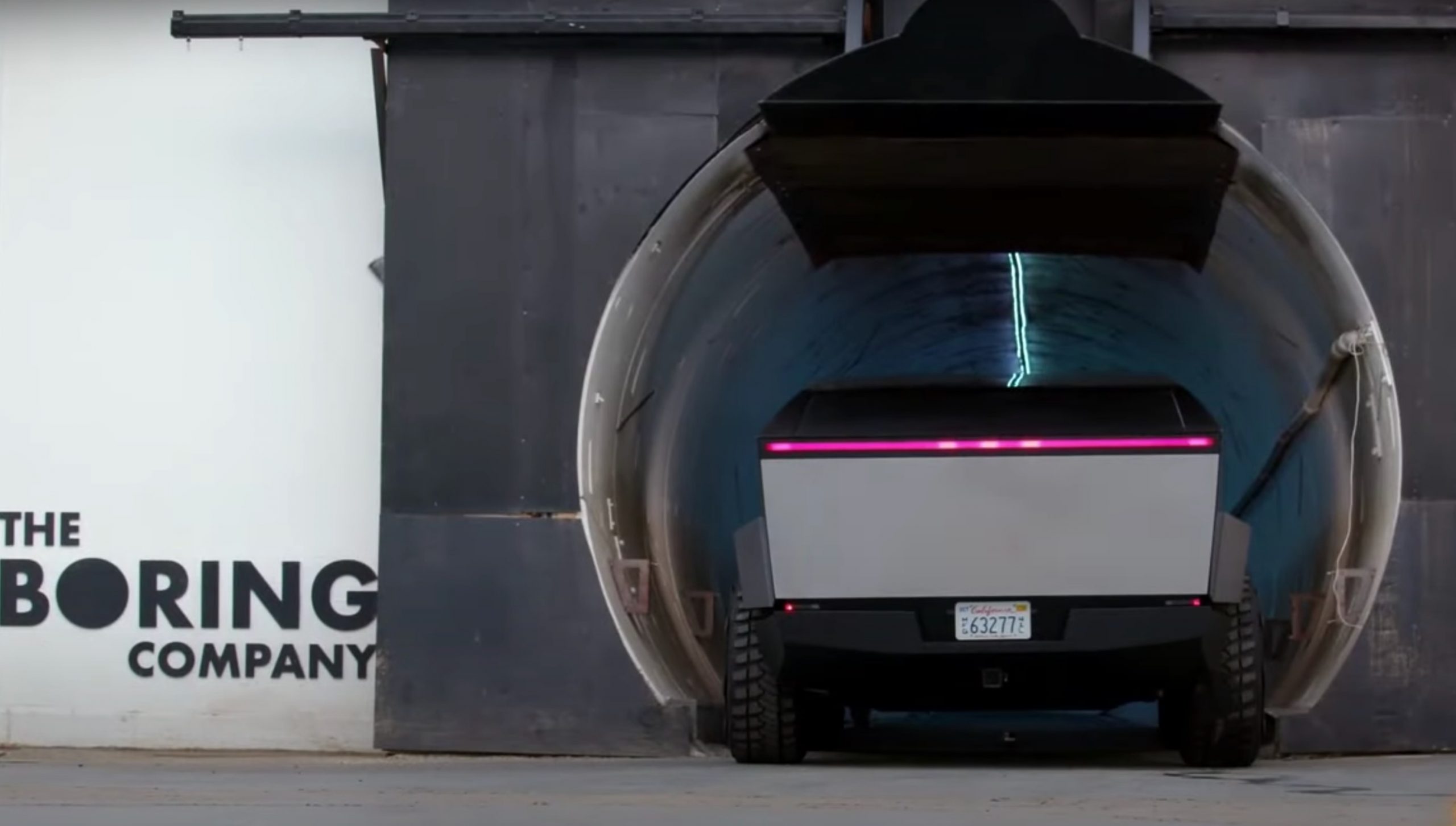
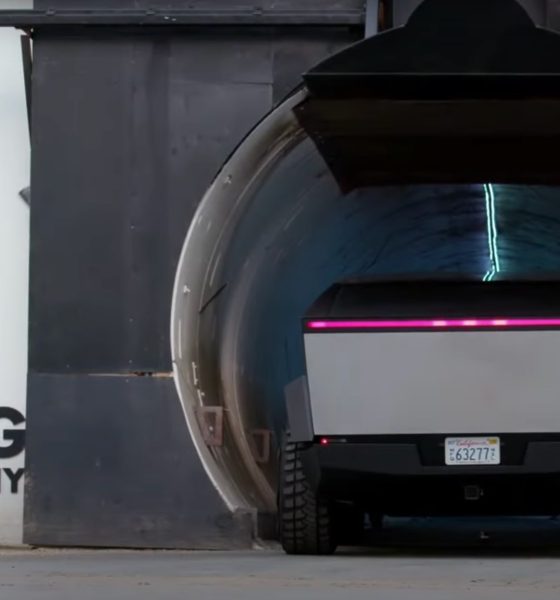
News
The Boring Co.’s projects are making transit departments rethink above-ground travel
The Boring Company’s underground tunneling projects are widely-appealing to Transit Departments and Authorities across the United States. Because of the sustainable tone of Elon Musk’s Boring Company, along with the efficiency of an Express-based system, agencies responsible for solving the issue of public passenger transportation are considering underground options more often than ever before. Above-ground public travel options, like Monorails or buses, are being ditched for underground options, and subways are outdated and not widely considered by these agencies.
Elon Musk’s underground tunneling venture has made it from California to Las Vegas, and now, back to California again, as the San Bernardino County Transportation Authority (SBCTA) is considering a new underground tunneling project from the Boring Company. Later today, on February 3rd, the entity will consider the Boring Company’s submission for an underground tunnel that would take travelers from several different locations to the Ontario International Airport, located in Southern California. While the Boring Company has already received the equivalent of preliminary approval from the Transportation Authority, more questions are being asked to secure the tunnel’s place in the densely-populated and traffic-heavy area of Southern California.
In September 2020, the SBCTA Board of Directors approved the release of a Request for Qualifications, seeking qualified entities to submit a Statement of Qualifications for a potential tunneling project in San Bernardino County. According to documents released by the SBCTA, the tunnel will run from the Rancho Cucamonga Metrolink Station to the Ontario International Airport, procuring a design-build and transitional operate-maintain methodology that will have the two transit systems running concurrently to complement one another.
The 31-minute ride from the Rancho Cucamonga Metrolink Station to the Ontario International Airport could be expedited thanks to a new Boring Company tunnel proposal. (Google Maps)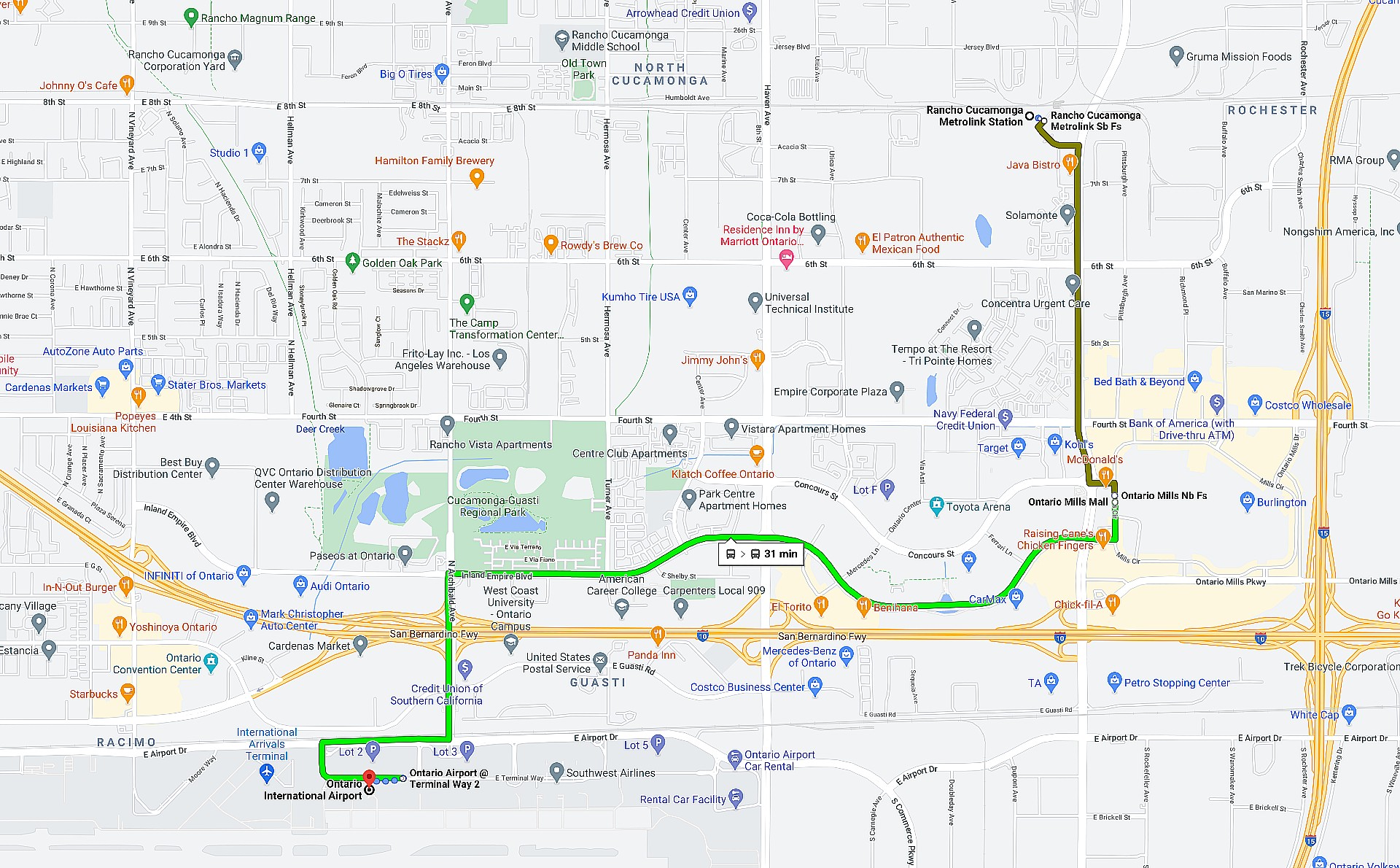
The only thing is, not many companies with expertise in tunneling stepped forward. And by not many, only one did: The Boring Company.
The SBCTA wrote:
“In response to the RFQ, one Statement of Qualifications (SOQ), from The Boring Company, was received on November 30, 2020. A review panel was assembled involving a technical review team and an executive oversight team consisting of representatives from the City of Rancho Cucamonga, the City of Ontario, the OIAA, Omnitrans, and SBCTA. The SOQ was deemed responsive and passed all the minimum requirements of the RFQ.”
After an initial assessment from SBCTA Board Members, the Boring Company met the minimum requirements to qualify for further scrutiny. The Boring Company’s Statement of Qualifications only received a score of 58/100. Still, more information regarding financing, timing, ridership, and how the system will operate in conjunction with the Rancho Cucamonga Metrolink Station will likely increase that score. These issues are set to be brought up during the Board of Directors meeting later today.
Ditching Above-Ground Systems for Underground Tunnels
Above-ground systems of transportation have been around for ages. Monorails, trains, and other large-scale passenger transportation systems have been aligned with cost-effective and efficient travel for decades, but a new era has come in thanks to Elon Musk. While many argue that the Boring Company’s system is a simple revision of a subway, it is far from identical. The Boring Company loops use Tesla’s all-electric vehicles for passenger transport, eliminating jam-packed, unsanitary, and oftentimes, uncomfortable situations where underground travel is offered.
Sitting in an automotive seat, likely joined by colleagues, or in some cases, complete strangers, is much more comfortable in a smaller setting, especially as the COVID-19 pandemic rolls on. Additionally, the express-system eliminates the need for unneeded stops, decreasing total travel time.
While the San Bernardino project seems to indicate that the Boring Company will work with an already-operational monorail system, other projects have completely abandoned the idea of using an above-ground Monorail system. One of the most notable is the Boring Company’s Vegas Loop. After the Las Vegas Convention and Visitors Authority (LVCVA) purchased the bankrupt Vegas Monorail system in 2020, it opened the door for the Boring Company to expand its possible tunneling to property exclusive to the Monorail.
The Boring Company has several other large-scale projects in the proposal stage, including one in Fort Lauderdale, Florida, and Chicago, Illinois. These projects are in the early stages and will be subjected to the speed at which local authorities move. Some agencies are quicker to get the ball rolling on public transit projects than others. For example, a tunnel between Baltimore and Washington D.C. would eliminate the need to travel on the Maryland Transit Authority’s Lightrail system, a cost-effective, but not time-effective, way to travel from suburbs of Baltimore County to the Nation’s Capitol. This project has been in a stalemate for several years but would expedite the travel time from Baltimore’s Camden Yards, home of the Orioles, to Washington. The Boring Company’s website indicates that an environmental review is pending.
Underground tunnels may be the way of the future, much like electric cars. At the forefront, a South African-born entrepreneur named Elon Musk is leading the charge, changing how human beings will travel from one point to another.
The San Bernardino County Transportation Authority’s Agenda is available below, with The Boring Company’s consideration beginning on page 13.
Tbc San Bernardino Tunnel by Joey Klender on Scribd

News
Tesla Cybercab tests are going on overdrive with production-ready units
Tesla is ramping its real-world tests of the Cybercab, with multiple sightings of the vehicle being reported across social media this week.
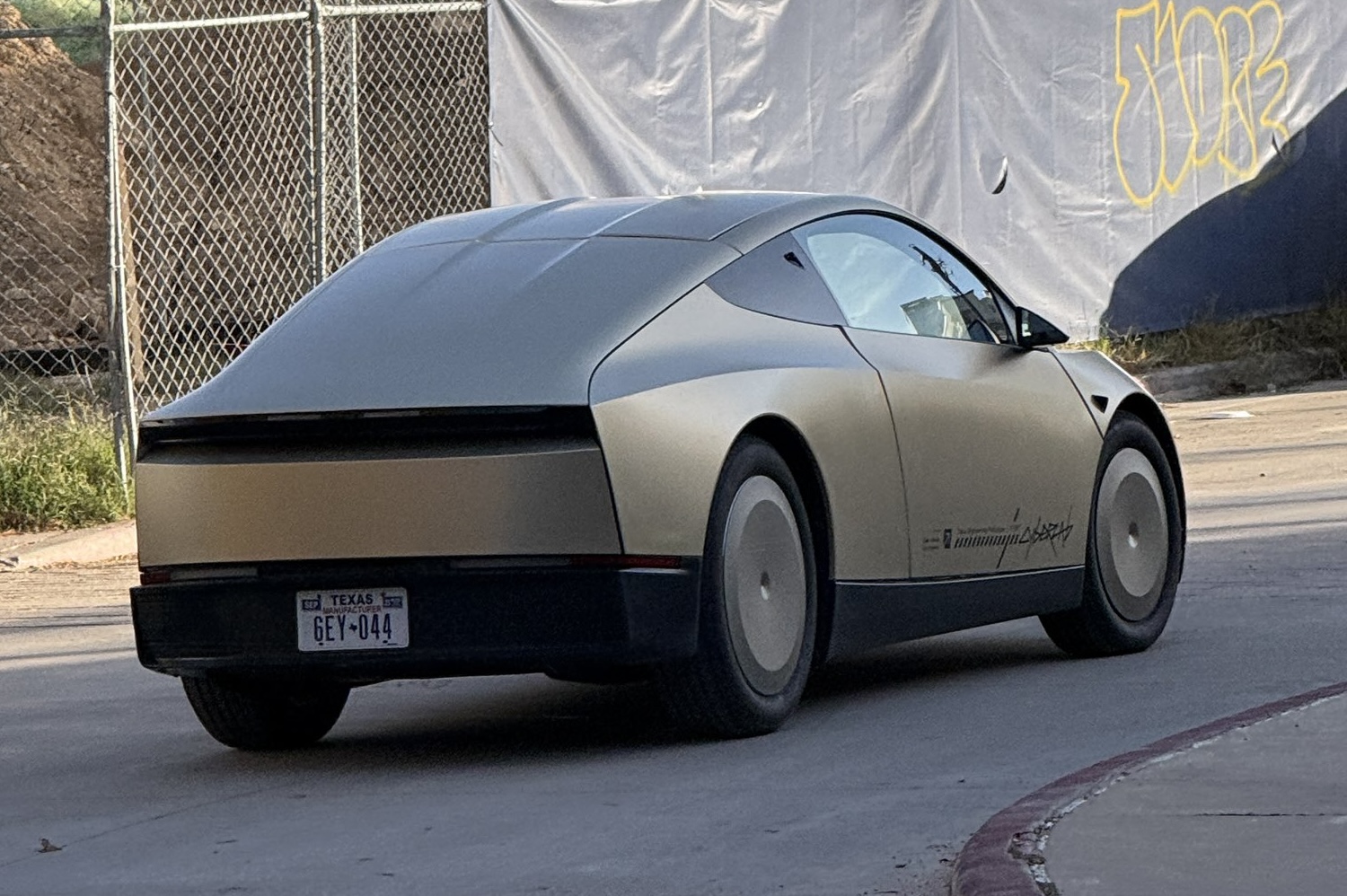
Tesla is ramping its real-world tests of the Cybercab, with multiple sightings of the autonomous two-seater being reported across social media this week. Based on videos of the vehicle that have been shared online, it appears that Cybercab tests are underway across multiple states.
Recent Cybercab sightings
Reports of Cybercab tests have ramped this week, with a vehicle that looked like a production-ready prototype being spotted at Apple’s Visitor Center in California. The vehicle in this sighting was interesting as it was equipped with a steering wheel. The vehicle also featured some changes to the design of its brake lights.
The Cybercab was also filmed testing at the Fremont factory’s test track, which also seemed to involve a vehicle that looked production-ready. This also seemed to be the case for a Cybercab that was spotted in Austin, Texas, which happened to be undergoing real-world tests. Overall, these sightings suggest that Cybercab testing is fully underway, and the vehicle is really moving towards production.
Production design all but finalized?
Recently, a near-production-ready Cybercab was showcased at Tesla’s Santana Row showroom in San Jose. The vehicle was equipped with frameless windows, dual windshield wipers, powered butterfly door struts, an extended front splitter, an updated lightbar, new wheel covers, and a license plate bracket. Interior updates include redesigned dash/door panels, refined seats with center cupholders, updated carpet, and what appeared to be improved legroom.
There seems to be a pretty good chance that the Cybercab’s design has been all but finalized, at least considering Elon Musk’s comments at the 2025 Annual Shareholder Meeting. During the event, Musk confirmed that the vehicle will enter production around April 2026, and its production targets will be quite ambitious.
News
Tesla gets a win in Sweden as union withdraws potentially “illegal” blockade
As per recent reports, the Vision union’s planned anti-Tesla action might have been illegal.
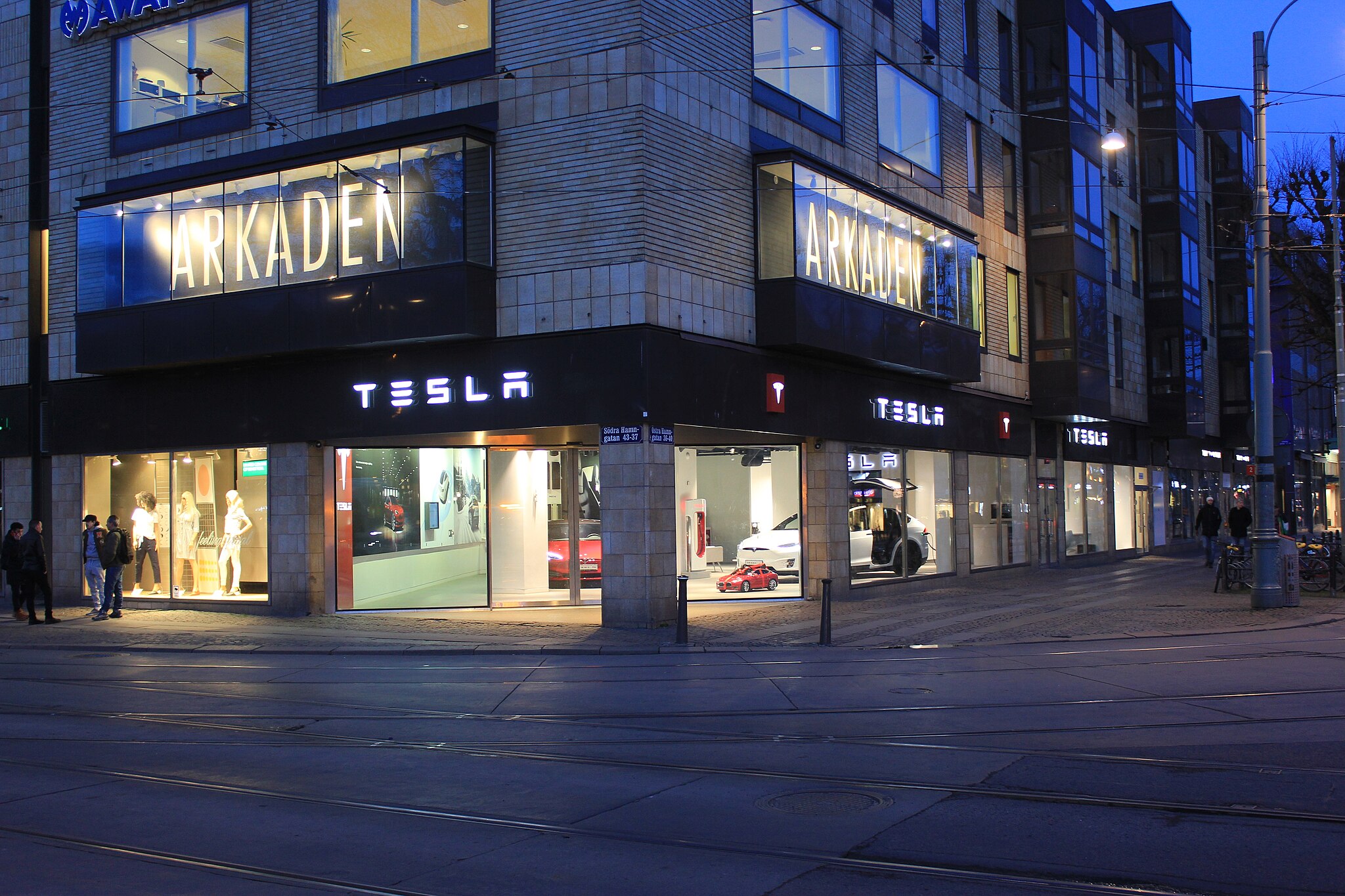
Swedish union Vision has withdrawn its sympathy blockade against Tesla’s planned service center and showroom in Kalmar. As per recent reports, the Vision union’s planned anti-Tesla action might have been illegal.
Vision’s decision to pull the blockade
Vision announced the blockade in early December, stating that it was targeting the administrative handling of Tesla’s facility permits in Kalmar municipality. The sympathy measure was expected to start Monday, but was formally withdrawn via documents sent to the Mediation Institute and Kalmar Municipality last week.
As noted in a Daggers Arbete report, plans for the strike were ultimately pulled after employer group SKR highlighted potential illegality under the Public Employment Act. Vision stressed its continued backing for the Swedish labor model, though Deputy negotiation manager Oskar Pettersson explained that the Vision union and IF Metall made the decision to cancel the planned strike together.
“We will not continue to challenge the regulations,” Petterson said. “The objection was of a technical nature. We made the assessment together with IF Metall that we were not in a position to challenge the legal assessment of whether we could take this particular action against Tesla. Therefore, we chose to revoke the notice itself.”
The SKR’s warning
Petterson also stated that SKR’s technical objection to the Vision union’s planned anti-Tesla strike framed the protest as an unauthorized act. “It was a legal assessment of the situation. Both for us and for IF Metall, it is important to be clear that we stand for the Swedish model. But we should not continue to challenge the regulations and risk getting judgments that lead nowhere in the application of the regulations,” he said.
Vision ultimately canceled its planned blockade against Tesla on December 9. With Vision’s withdrawal, few obstacles remain for Tesla’s long-planned Kalmar site. A foreign electrical firm completed work this fall, and Tesla’s Careers page currently lists a full-time service manager position based there, signaling an imminent opening.
News
Tesla Semi program Director teases major improvements
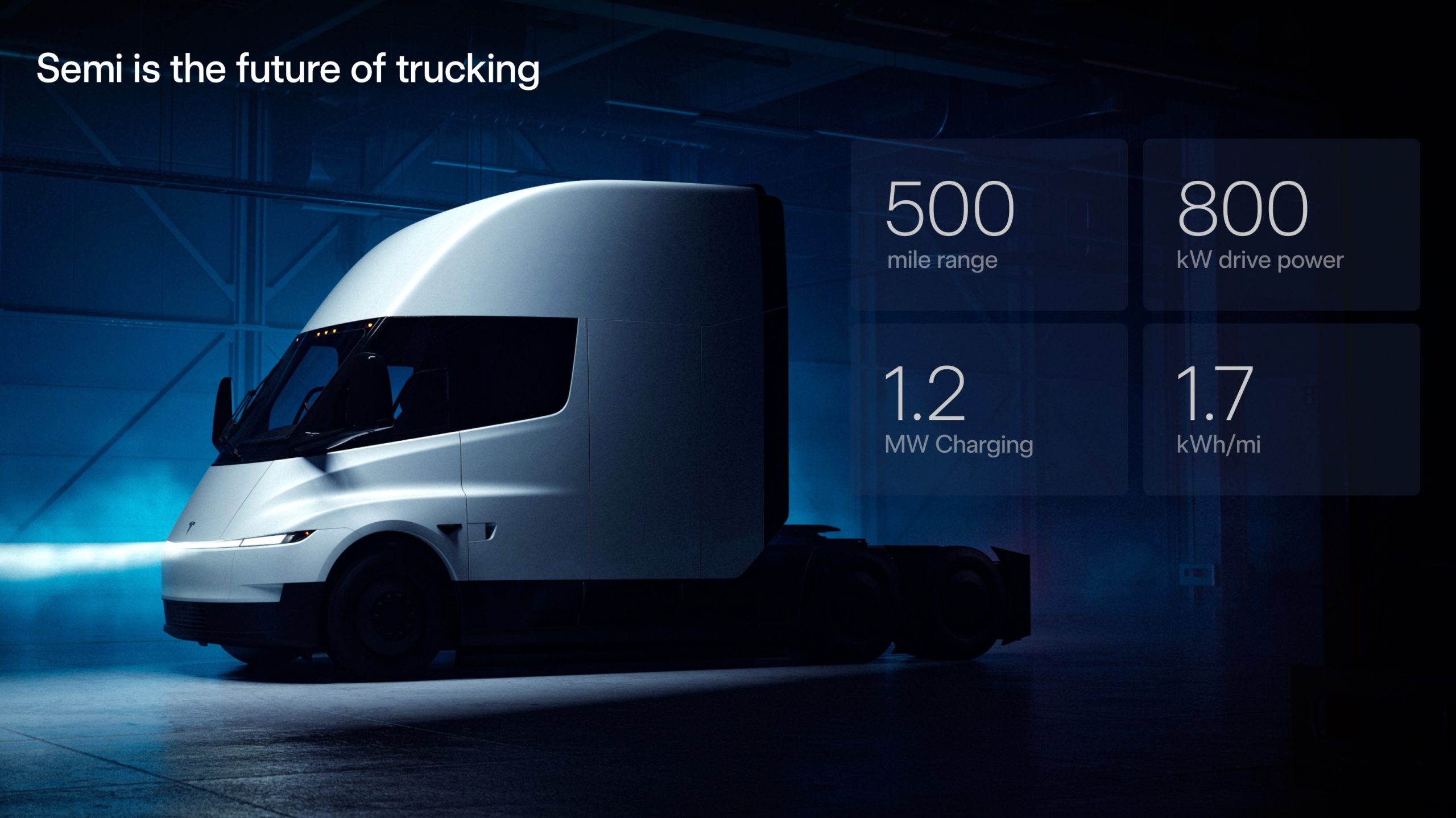
Tesla Semi Program Director Dan Priestly teased the major improvements to the all-electric Class 8 truck on Thursday night, following the company’s decision to overhaul the design earlier this year.
Priestley said he drove the Semi on Thursday, and the improvements appear to be welcomed by one of the minds behind the project. “Our customers are going to love it,” he concluded.
Just drove the redesigned Semi. Our customers are going to love it. https://t.co/KZ88sf1CDL
— Dan Priestley (@danWpriestley) December 19, 2025
The small detail does not seem like much, but it is coming from someone who has been involved in the development of the truck from A to Z. Priestley has been involved in the Semi program since November 2015 and has slowly worked his way through the ranks, and currently stands as the Director of the program.
Tesla Semi undergoes major redesign as dedicated factory preps for deliveries
Tesla made some major changes to the Semi design as it announced at the 2025 Annual Shareholder Meeting that it changed the look and design to welcome improvements in efficiency.
Initially, Tesla adopted the blade-like light bar for the Semi, similar to the one that is present on the Model Y Premium and the Cybertruck.
Additionally, there are some slight aesthetic changes to help with efficiency, including a redesigned bumper with improved aero channels, a smaller wraparound windshield, and a smoother roofline for better aero performance.
All of these changes came as the company’s Semi Factory, which is located on Gigafactory Nevada’s property, was finishing up construction in preparation for initial production phases, as Tesla is planning to ramp up manufacturing next year. CEO Elon Musk has said the Semi has attracted “ridiculous demand.”
The Semi has already gathered many large companies that have signed up to buy units, including Frito-Lay and PepsiCo., which have been helping Tesla test the vehicle in a pilot program to test range, efficiency, and other important metrics that will be a major selling point.
Tesla will be the Semi’s first user, though, and the truck will help solve some of the company’s logistics needs in the coming years.








